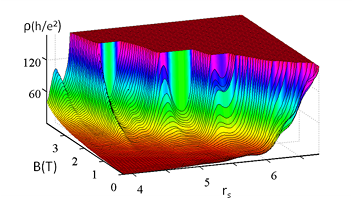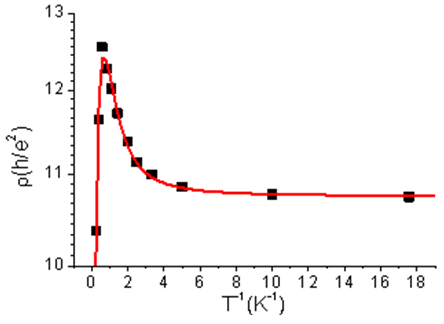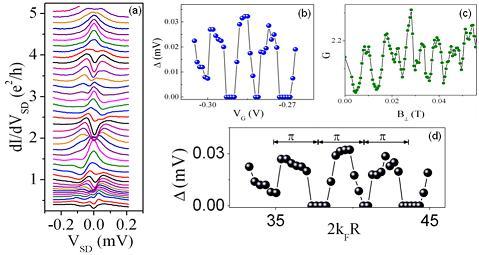 The growth of GaAs-AlGaAs heterostructures containing a 2D electron gas allows the investigation of a range of effects in which varying the distance between the electron gas and the dopants controls the background disorder. Analysis of the conductance indicates that when the impurities are close to the electron system the disorder is short range but as the distance between impurities and electrons is increased the disorder becomes progressively longer range.
The growth of GaAs-AlGaAs heterostructures containing a 2D electron gas allows the investigation of a range of effects in which varying the distance between the electron gas and the dopants controls the background disorder. Analysis of the conductance indicates that when the impurities are close to the electron system the disorder is short range but as the distance between impurities and electrons is increased the disorder becomes progressively longer range.
 We have investigated the mesoscopic range of behaviour which is when the samples are small but still two-dimensional. When the impurities are close to the interface and the disorder is strong the increase of conductance with carrier concentration contains spikes periodic in gate voltage which correspond to the Coulomb Blockade due to electrons trapped in potential fluctuations. As the disorder is decreased the spikes disappear and an oscillatory pattern emerges which appears more periodic in electron separation (figure 1). Such an effect may indicate that the electrons are attempting to form a periodic array which causes certain configurations to have an enhanced stability.
We have investigated the mesoscopic range of behaviour which is when the samples are small but still two-dimensional. When the impurities are close to the interface and the disorder is strong the increase of conductance with carrier concentration contains spikes periodic in gate voltage which correspond to the Coulomb Blockade due to electrons trapped in potential fluctuations. As the disorder is decreased the spikes disappear and an oscillatory pattern emerges which appears more periodic in electron separation (figure 1). Such an effect may indicate that the electrons are attempting to form a periodic array which causes certain configurations to have an enhanced stability.
This system is highly novel and is giving rise to new physical phenomena, including those described below:
 The sample resistance increases rapidly as temperature decreases, due to localisation, reaches a maximum and then falls to a temperature independent value at low temperatures. This indicates a transition from single electron to a collective electron motion (figure 2).
The sample resistance increases rapidly as temperature decreases, due to localisation, reaches a maximum and then falls to a temperature independent value at low temperatures. This indicates a transition from single electron to a collective electron motion (figure 2).- A lattice of trapped spins of unknown origin is present in the heterostructure which gives rise to observation of electron orbits circulating around these trapped spins (Aharonov-Bohm effect). These spins are either in a ferromagnetic or anti-ferromagnetic array due to coupling by the RKKY interaction (figure 3).
